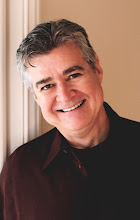First, it was a project-based course. Students would learn to program by working out a number of projects that ran the gamut from creating an on-screen calculator to writing a program that could code and decode messages, from creating a program that could translate messages into (and from) Morse Code for long-distance communication, to writing a program that simulated the construction and launch of a rocket.
It was decided early on that for the student text I would write a narrative for each project that would place it within an historical context, and since I have always had a considerable interest in the study of history--as well as studied it while attending Georgetown University's School of Foreign Service--I looked forward to researching and writing it.
Before I began, though, I decided that each narrative must accomplish three things:
- It must be interesting enough to engage the students
- It must highlight the obstacles that stood in the way of innovation at different points and recount how innovators used logic to overcome them
- It must reinforce to students that innovation most often occurs due to the efforts of inspired individuals
Fortunately, I had as my partner in the project a passionate teacher (and former programmer) named Javier Andre. Together we spent many hours talking through the step-by-step processes that formed the structure of the course; I also spent a lot of time in the actual classrooms listening to both Javier and his students in order to further clarify the Teacher's Guide.
I knew that the first challenge, an on-screen calculator project, would be formidable since the topic itself made me yawn every time I thought about it. I knew too that a title like "A History of Calculators" would probably ensure that the texts were never even opened, much less read.
In the end, I opted for taking a slightly larger view of the topic and wrote "A Brief History of Addition."
